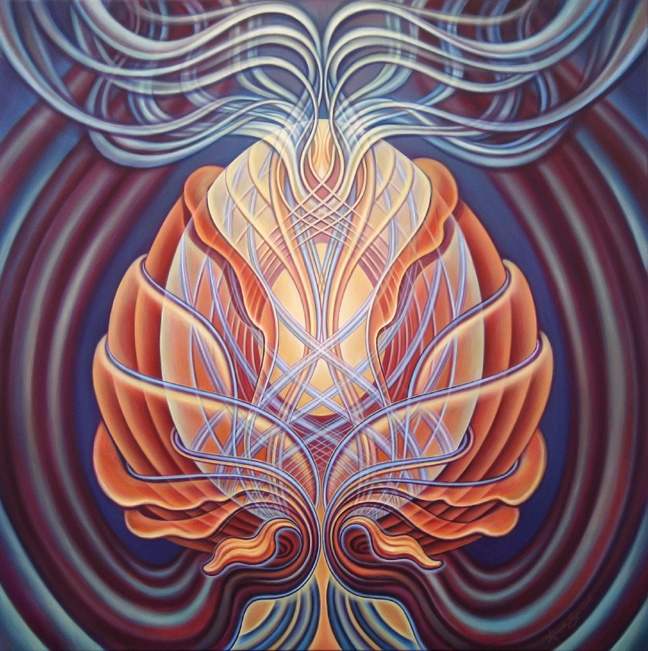
by Maria Papaspyrou | May 23, 2021 | Collective Consciousness, Depth Psychology, integration, Mental Health, Psychedelic Integration, Relationship to Self, Self development |
The exploration and mapping of the ‘self’ have been at the heart of psychological and spiritual inquiry. There is the self we have access to in our day to day lives and a Self that is obscure and reveals itself primarily through peak experiences, as a much broader place of knowing and potential. The various manifest and unmanifest aspects of self, exist in dialogue and tension at the very edges of our growing.
THE EGOIC SELF
The part that is most accessible to us through everyday life is the egoic self. Here lies our centre of consciousness, holding the thread of continuity between past and present, through which we weave our sense of identity and belonging. The egoic self holds our life stories and becomes shaped through the ripples of cause and effect that these create. If we grew up with intrusive or aggressive parents, then our egoic self may become impermeable as a result of finding intimate relationships unpredictable, threatening or overwhelming. If we grew up in a family that consistently neglected our basic needs, then our egoic self may grow around a deep sense of worthlessness. If we have come from a family of ancestral riches and success, then our egoic self may constantly strive to maintain our belonging through following on our ancestors’ footsteps. What this means, is that while we tend to think of the egoic self as distinct and separate from others, it actually comes to exist through a web of fairly proximate relationships that come to shape its curves and edges. Everything we know so well about the impact of ancestral and early environments on later personality supports this. I like to think of the egoic self as a tree that is part of a much bigger forest, intimately bound and dependent on the overall health of the wider ecosystem its roots belong to.
The egoic self that exists within the realm of everyday consciousness is destined to hold a narrower view into the deep complexities of life. Tightly bound with our early developmental needs and wounds, it can inflate everyday encounters to shapes of utmost and ultimate importance. At times it lands us in our well-developed abilities and resources and at times it pulls us through our early narcissistic wounds and primitive defences. And so, the egoic self can at times render us deeply vulnerable and tied to the mortal games of life, the frightful struggles for control and ultimately survival.
THE ESSENTIAL SELF
Behind the contours of the egoic self, hidden from view in our encounters with everyday life, lies the essential Self; eternal and expansive. This deep space of knowing exists through many names; some call it true nature, consciousness, spirit, soul, deep psyche, or wisdom. Firmly rooted within the greater picture of all things, it lends us a perspective that joins the dots between the minutia of life. The essential self operates from a deeper, wider and broader source of reality. Its knowing penetrates into the very heart of any matter, allowing us to stand in soulful truth. From here we become resourced to face the greater existential matters and explore the bigger answers life calls on us to draw from. The essential self can ease the tyrannical fears of the egoic self, giving us space to contemplate life’s challenges and resources from a place of deeper presence, authenticity, connection and compassion. It can help us reshape the stories of our egoic self and reframe how we relate to our lives.
The essential self is the bedrock of our highest values, integrity and truth. It discerns everything that ever happens as a micromovement, its outcomes vastly uncharted and unknown. How many times have we deeply grieved only to find new life emerging through the undergrowth of our pain and sorrow? How many times have we deeply craved for something only to find it unfolding into a different reality to what we dreamed of? Such movements through life’s twists and turns are supported by the essential self which is tightly bound to the ebb and flow of life, the deeper currents of death and rebirth, chaos and order, the coming apart in service of a renewed coming together, the interdependence of it all. From these deep roots all is ever growing, ever emerging, ever becoming. We can think of the essential self as the forest that surrounds and sustains the tree of the egoic self. The great mother that can nourish its frail vulnerabilities and temper its infantile struggles. While the egoic self is bound by the wounds of the past, the essential Self radiates the potential healing of the future. While ego struggles to be right, the essential self strives to be whole.
NAVIGATING BETWEEN THE TWO
But how does one move from ego-consciousness to the essential eco-consciousness? From the part to the whole? From what matters to us at any given moment in time to what matters in the greatest spread of things? How do we gestate something greater to emerge and become a reality through us? Such midwifing requires some kind of inner communion and connection. It doesn’t tend to happen while we are on autopilot, moving ahead from task to task, from day to day, deeply ingrained into the rustling humdrum of everyday life. Sometimes a wounding, a slippery time, open this entrance. Sometimes when the ego is overwhelmed and at a loss for answers, the essential self finds an opening to reach us. Rites of passage and initiations like the one we have collectively and unwittingly stepped into through Covid, myths, rituals and ceremonies, expanded states of consciousness, embodied practices, deeply reflective and contemplative practices can open the door to our path, our healing, our sense of purpose, our greater truth, our true belonging. They can bring the essential self in support and service to the egoic self.
There are times where moving from one to the other is immediate and seamless and other times where the egoic self can become overwhelmed by the realities and input of the essential self, requiring a long journey to support this integration. Such openings to something greater require a resilient enough ego-center that can withstand and sustain the contact between the egoic and the essential self. There is also a wider need for the containing power of community that can acknowledge the value and develop the trust required by such a process.
In the hands of some new age belief systems the essential self has been turned into an inner knowing God to whom we only need to surrender all of our life’s struggles and responsibilities. But in depth-psychology, these deeper archaic forces require our utmost presence and participation. We have to step into the hidden layers of our pain that this place opens us up to and the responsibility that comes with deeper knowing, if we are to receive the inner resourcing it can offer. The essential self is a place we must always come to and then return from. The dangers of residing here are too grave. While we might wish to stay here to inflate or numb ourselves from life’s painful encounters, we risk bypassing reality and our human capacity for tension, pain and therefore growth. The dangers of residing only in the egoic self is to be continually re-wounded by our blind spots, risking burnout and depression. The egoic and the essential self are neither to be kept apart as separate nor may not choose one over the other. They are meant to be kept in constant connection, nourishing one another with their alternate and diverse realities. While we must never abandon the egoic self, we turn to the essential self for a deeper nourishing of our resources, preparing for our next steps, onto the ground of reality. Indeed, our spiritual, psychic and emotional health depend on periodically coming to step into this greater re-source of things, this space of greater wholeness.
OUR CURRENT TIMES
In our current collective times, on an egoic level, we are in crisis. On an essential level, the world is trying to speak to us and reach us. These are times that require our utmost inner and outer participation. Away from the polarities of catastrophe and divine intervention, in the midst of the greatest collective event we have encountered as a generation, lies a powerful archetypal territory taking us through the pivotal process of death and rebirth. Such challenges call on us to reach further within ourselves so we can grow to our collective and archetypal greatness and vastness, to our true essential nature, to nature herself.
In this great initiation we are being called to our values and our integrity. To navigating our path with intention and purposefulness. To accessing the deepest strands of our humanity. There is a lot for all of us to grapple with; questions with answers, questions without answers, answers still waiting for the right questions. Our deeply ingrained collective ego structures are being challenged. If we can sit through this painful shedding process, we can access our deepest hidden wounds as they become available for healing. In the words of Lynne Twist:
The primary battlefield of this century is with ourselves. It is the battle between the self and the Self: between our existing habituated self and our emerging future Self, both individually and collectively.
As we navigate through these times, the essential self is being called to bring its deep roots, its deep belonging to all things, in greater view. When we ground in this connection to the source of all things, we can return, re-sourced and connected, to the resilient centre of our egoic self, to meet the tasks we are faced with. Once we connect to the brightest possible light of knowing within ourselves, the animating force of the world, we can begin to recover a deep love and respect for all our mortal brokenness. With humility and courage we embark on the healing journey of slowly transforming our wounds into growthful potential.
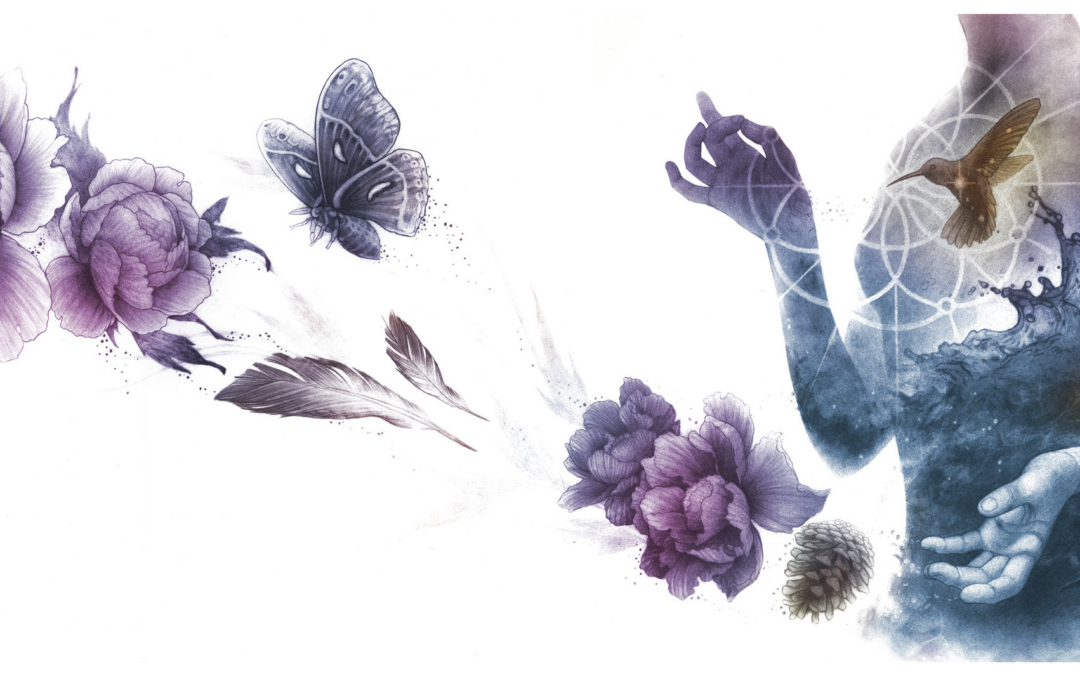
by Maria Papaspyrou | Dec 31, 2020 | Collective Consciousness, Depth Psychology, Ecotherapy, integration, Mental Health, Nature and Self, Relationship to Self, Self development, Shadow Work |
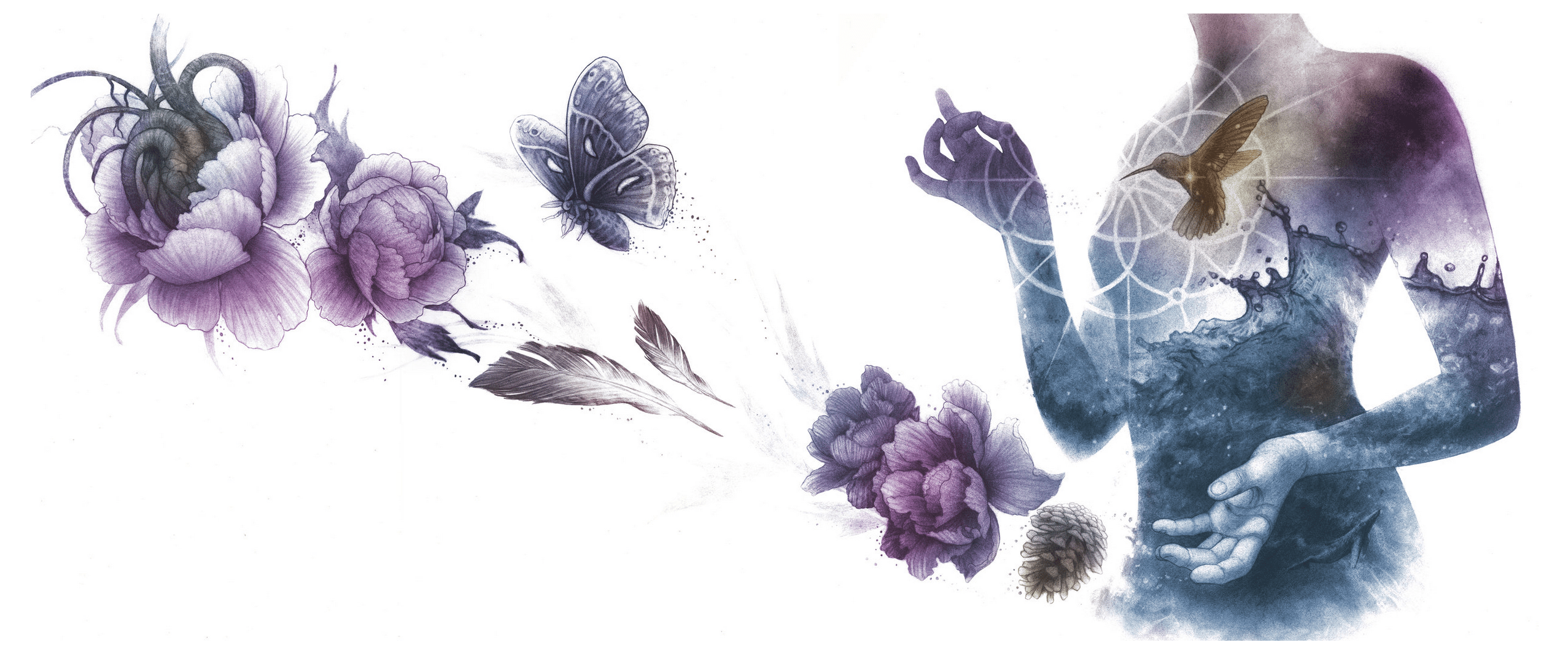 Art by Heather Mclean
Art by Heather Mclean
As the yearly cycle draws to a close, people I work with have been reflecting on the year that has suspended most of our habitual ways of being. Their reflections have been surprising, inspiring and powerful, as they reveal a deeper narrative of silent growth. The dominant narratives in the public discourse have been focusing on the experiences of stuckness and stillness.
The words ‘lockdown’ and ‘quarantine’ have entered our daily vocabulary, casting a spell on our sense of the world around us. And while these words describe concretely what is occurring in the external world, the people I work with brought forth new narratives that acknowledge the ever-unfolding and ever-evolving movements of nature, that apply to our inner worlds. While life on the outside seems to have stood still, our internal worlds have kept on ticking. Perhaps even more so, as a reflexive balancing act towards the excruciating constrictions of the outside.
Up against the background of stillness, the movements of our inner worlds are more discernible than ever. Indeed, so much has happened in a year that so little has moved. Taken out of our routines and habits we have all had to sit with our fear, our frustration, our discomfort, our rage and most importantly we have had to sit with our selves. Our internal world has taken centerstage, urging us to deeply question our lives, values and choices.
Such disruptions break the mold and unleash a chaos that holds the imprints of a new potential emergent order. A chaos that supports new openings towards deep and meaningful transformation. In the shadows of Self, movement and connection have not ceased. In these conditions, many of us have come to realize what truly matters, what needs to live and what needs to die. The chaos of uncertainty and restrictions seems to have become fertile ground for people to find the resolve to meet and invite even further uncertainties in their lives. To break the mold a little bit more.
Decisions and movements that seemed monumental at the start of the year have started being a reality in motion for many by the end of the year. This year of collective fear, loss and grief, has challenged us to let go in unprecedented ways and degrees. As we have let our layers of habit fall through one by one, as we have stepped into the deep uncertain, as we have lost our ways of being in the world, as we have felt powerless to choose, we have arrived to our grief. We have had to grieve for our communities, our sense of connection, our freedom of movement, people we have lost.
Grief that is grieved becomes the fertile soil of regeneration. A new lease of life unfurls when we become intimate with the forces of death. The people I work with have made profound shifts this year. They have decided to face long avoided divorces, they have ended long standing affairs, they have moved houses, they have left their jobs or made career moves at a time where the public discourse insists on keeping us still. There is no stillness in the universe. There is no stillness in our soulful depths. The stillness we were plunged into on the outside was an incubating space where we were all hatching a different future to what we had sleepwalked into.
At the end of this year I feel deeply moved to witness people’s spirit and commitment to sitting with their discomfort and attending to the process of midwifing forth whatever is ready to emerge. I see a deepening resilience and a commitment to planting new seeds, pursuing meaningful and authentic ways of being, in service of greater growth. It seems that we have needed the outside world to stop so we can regain the space, time, energy, presence and inner resources required for listening to the voices within that tell us who we are meant to become. These opening to our emergent self are in service to the individual and to the wider collective whole we all belong to.
I invite you to take stock, as the year comes full circle to its close, to the seeds you may have intently or inadvertently sowed, deep in the soil of soul. We anticipate another year that will challenge us even further, but despite the external realities and narratives we must hold on to the narratives of our inner resources. All the seeds I have witnessed being sown this year, will be sprouting next year. Whatever challenges we may have to face ahead, next year is destined to be full of new growth, directions and emergent potential.
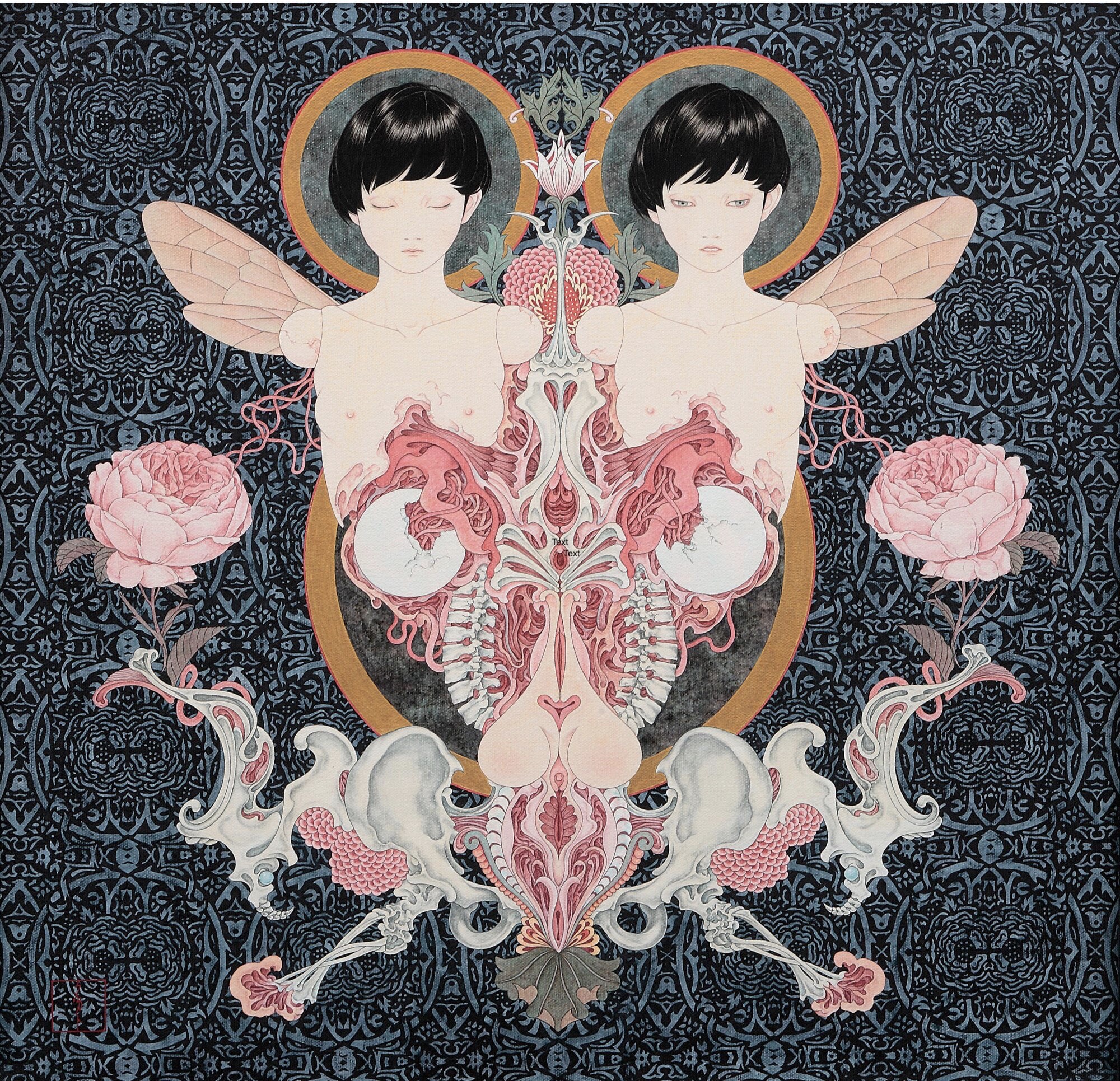
by Maria Papaspyrou | Jun 6, 2020 | Collective Consciousness, Depth Psychology, integration, Mental Health, Psychedelic Integration, Relationship to Self, Self development, Shadow Work |
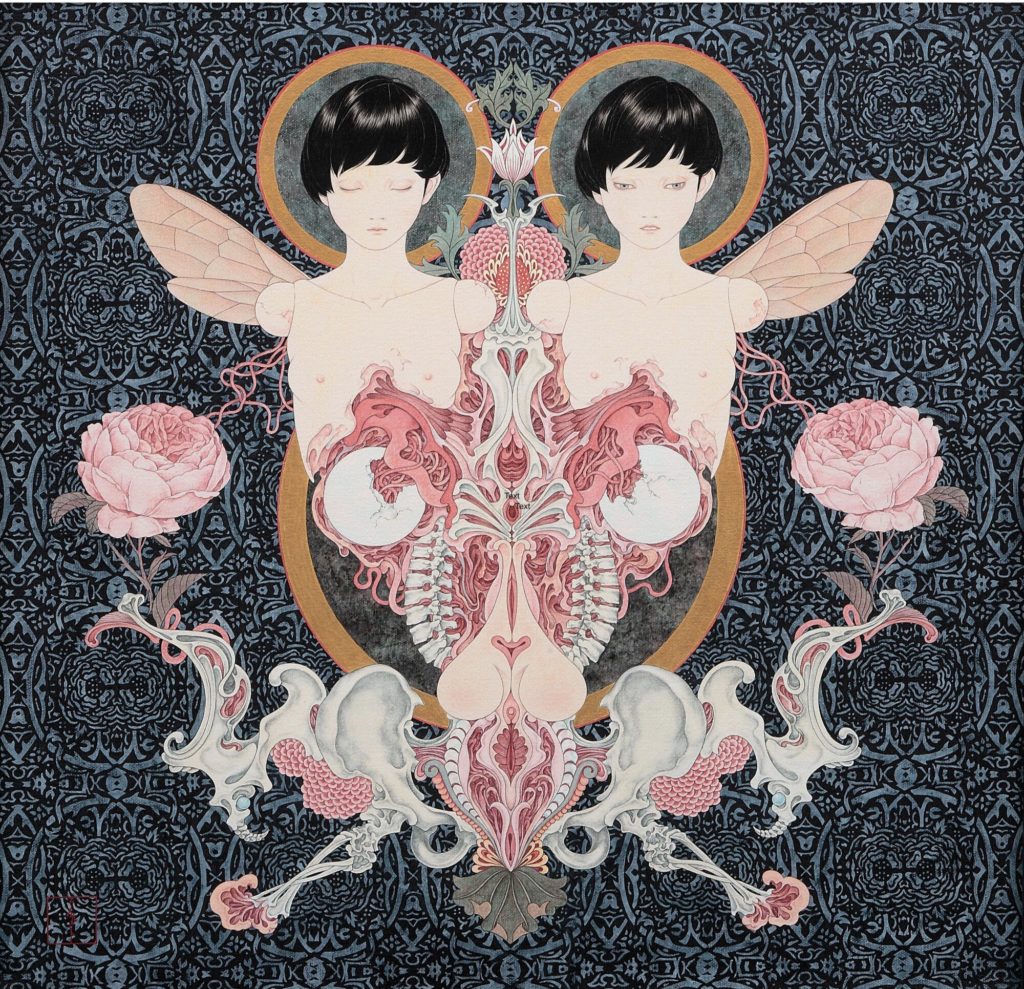
Art by Takato Yamamoto
We are in the midst of a collective crisis and initiation, where peril and potential sit alongside each other. Humanity has always understood that change and transformation require sturdy containers to hold the fluid process of becoming. That all seeds of growth require a vessel in which to gestate. Alchemical stages, myths and fairy tales, initiatory rites and rituals are all such wombs, that birth the emergence of the new. Through their tasks and stages, they map out the timeless cycles of regeneration. And they all highlight the importance of intention that aligns such journeys with meaning and purpose, providing a necessary amulet for navigating these treacherous terrains.
In tribal cultures, initiations and rites of passage were sacred portals. They moved the initiate from a state of being to a stage of becoming. These technologies of the soul would dissolve the initiate’s ego structures in order to support the unfolding of a deep psychic reorganisation. The metamorphosis would evolve in three stages. At first, the initiate would enter a stage of separation and isolation, followed by a period of ordeal, severance and symbolic death, culminating in ceremonial and communal rebirth. In this final stage, the initiate would re-enter the collective whole as a valued tribal member of greater maturity, self-awareness and spiritual connection.
The stage of isolation and separation from the community would sometimes last for months. In this space, the initiate was in a state of uncertainty, disorientation and confusion. As they came to meet themselves in solitude, away from everyday distractions as well as from the tribal guidance and support, they dived deeply within, forced to discover and rely on their own inner resources. Their psychic resources and the wider cosmological guidance they encountered in this liminal space would be their compass in the darkness. Their isolation (often in a cave-like structure) was a symbolic drawing back into the fertile darkness of the womb. In this deep incubating space, the seeds of their future self were sowed, as they began to engage with their psychological and spiritual work. Here, in the regenerative dark, they waited for the Great Vision that would bring them into alignment with their vocation, life-purpose, place in their community and spiritual path.
The incubation stage was followed by the ordeal stage. Their process here was deepening. The initiate was confronted by a painful symbolic encounter with loss, dismemberment and death. It was their encounter with their suffering that activated their inner healing capacities. They were in the field of transformation. They were coming into greater consciousness as they moved from the innocence and dependency of childhood into the maturity and self-sufficiency of adulthood. But the self-sufficiency of these cultures was a highly relational space, as opposed to what this term means to us today. What they gained in their process belonged as much to them as to their collective, and they were to bring the gifts of this liminal space in service for the wider whole.
The ordeal of severance, loss and symbolic death was followed by a collective ceremonial rebirth. The newly emerged adult was welcomed back into their tribe. They were now mature enough to be in service. Here is where their integration process would begin to unfold, as their glimpses of the deep self and soul would become owned, honed and embedded through their participation in the relational field of the collective, their tribe, as a fully-fledged adult.
The person that returns is no longer the same as the person that left the tribe behind. This soul-deep transformation takes place within a sacred space that supports a safe process of renewal. The initiate has moved through the cyclical journey of death and rebirth that all great transitions require. This is a passage that serves the death of something old and the birth of something new. We will all be tasked with encountering a series of death and rebirth cycles throughout our lifetimes that contain the potential of initiating us into greater alignment with a deeper sense of self.
Initiation rites and rituals are no longer available to us in our so-called modern societies, but the soul that always remembers the journey it needs to undertake will find its process through seemingly-random acts of fate. But without the structured frameworks that would traditionally hold the arc of transformation and contain the necessary chaos that precedes all change, we are called to face them unresourced, come what may. To become initiated is to break in all the right ways and all the right places and through the cracks the possibility of something new may emerge. But not every break meets its mend. As James Hollis says:
There are wounds that crush the soul, distort and misdirect the energy of life, and those that prompt us to grow up.
In the fluid stages of becoming we open up to all possibilities; the integration of our wounds that will nourish our growth, or the disintegration from our wounds and the potential that they become infected and infect.
The path of change, transformation and initiation is paved with great uncertainty. We often do not know where it all leads or what it all means. As we walk away from the fragile edge of what we know and we can count on, we follow the unfolding mystery step by step, guided by our courage, curiosity and our commitment to draw our learning from our journey’s cycles. Such journeys are always purposeful. With intention and with the right containers, we can learn their language and support their creative process, until a deeper balance is restored.
Any movement towards greater awareness and consciousness requires a degree of discomfort, as we peel back the layers to get through to our core. Our encounter with suffering ignites the forces of transmutation, but requires our full participation. By relinquishing our clinging to the illusion of an always happy, easy, perfect and unfettered life and by moving through the grief of our lost innocence and idealizations, we come to cultivate a relationship with the existential agonies of life. At the end of such a journey, we have come to know ourselves and our inner resources in a more intimate way.
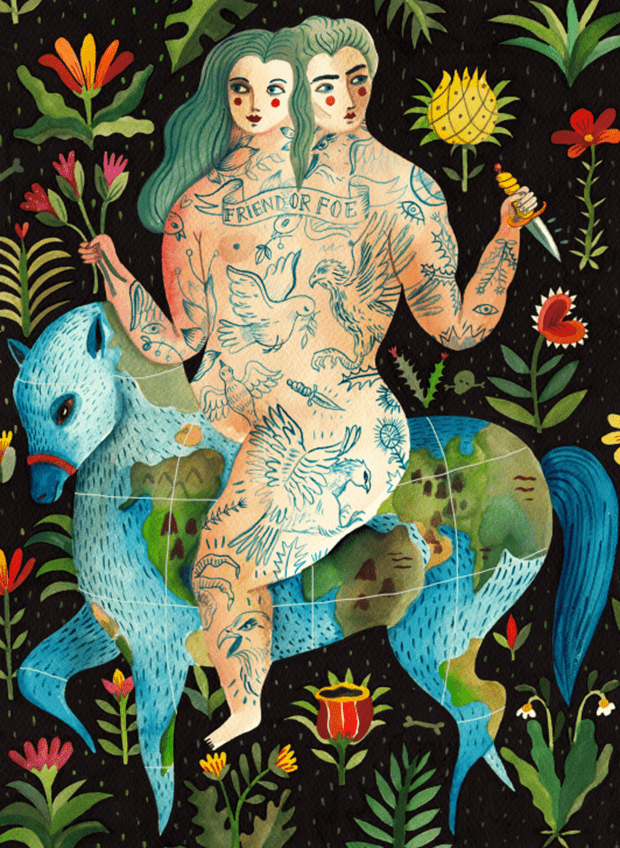
by Maria Papaspyrou | Mar 23, 2020 | Collective Consciousness, Depth Psychology, Ecotherapy, integration, Mental Health, Nature and Self, Political Psychology, Relationship to Self, Shadow Work |

Art by Aitch
We are in the midst of the Coronavirus pandemic, a crisis that in its speed, spread and intensity has exceeded any other experience of our lifetimes. This crisis is nudging us beyond our current social structures. We are being called to transcend the usual order of things, to think outside the GDP box and move from a humanitarian place; to contain individualism and re-member collectivism. None of the other current crises of our world have mobilized such a need for instant and profound adaptation. We feel safely removed from them as they tend to happen in a localized and distant way, to someone Other, mostly unseen and unfamiliar. We are vaguely aware of the threads between them and us but we have not been good at weaving together things that stand apart. Yet we have now been reached by a crisis that brings all the broken pieces of our world back into wholeness. This crisis has reached us all at once. We are up against an invisible force that has lifted the veils of illusion, offering us a glimpse into our interconnectedness, vulnerability, impermanence and lack of control. It has brought us up against the inescapable hard truths of our fragility and mortality. Of who we are and of our true place as a species in the wider whole.
Crises have been surrounding us for a while now. In the last few years we have been moving through the tremors of sociopolitical splits, divisive ideologies, mass migrations, fragmented thinking at the expense of systems thinking and the breakdown of climate and biodiversity. Yet as the virus is spreading indiscriminately across borders, race, gender, social class or creed, we come to witness the links of our interconnectedness. Humanity for once is becoming aware that we have always stood in the steps of collective fate as a whole. And we cannot silence this emergency and carry on with life as it was. We need to dig deep to find the gifts that will move us forward. But for now, there is a lot of death to face and a lot of grief to move through. We can no longer hide. We stand in the midst of the sixth mass extinction, the Anthropocene extinction. Humanity is part of it. Cause and effect of it. Our lives and ways will too be threatened. When progress is fueled by arrogance and narcissistic tendencies, it will act against the very nature we are part of. The journey ahead will test and challenge our resources, but also our integrity.
2020 has been so far short and full of warning signs. We started the year with the raging bushfires of Australia and the deforestation of the Brazilian rainforest. The lungs of our earth are under threat and attack. With the coronavirus, now human lungs mirror the same fate. In Chinese medicine, the lungs are associated with grief. We are coming to face our grief and the grief of the land. The grief that longs for what has been lost and ravaged. The grief for all our wrong turns. Our missed chances. Our choices at the various crossroads. Our priorities that have been guided by the illusion of separateness. In destroying the land and its ecosystems, we have been disrupting ourselves for there is no separateness, we are of the land, its dust is in our bones, its rhythms in our heartbeats. Every recent crisis has been moving us one step nearer to realization. This virus is bringing us even closer. It is only by allowing and moving through our grief that we can process and assimilate our losses and recalibrate our moral compass. This is where the new layers of regenerated life can ever really emerge from. The coronavirus pandemic is not just an enemy, it is a medicine just as much. The virus, like any other symptom or ailment, is also an expression of a healing movement. An attempt for healing doesn’t have to feel good to be of urgent necessity. Whether we can use its medicine will depend on our collective ability and will to integrate what we discover in this journey of descent and initiation. It will rest on our capacity to renegotiate who we are, with who we need to become.
Transformation happens through the rhythmic process of taking the self apart and then putting it back together. Chaos gives birth to a new order that is of greater complexity than before. This chaos is the pool of infinite possibility, our unconscious, and the new order is its assimilation into our consciousness. According to Carl Jung:
The descent into the depths always seems to precede the ascent.
For now, life gets pushed into the underworld, and death takes central stage. We are in the stages of descent to the subterranean realms of the unconscious, an essential aspect of an initiatory process in any mystery tradition. We are moving to the mythic and archetypal layers of the collective psyche. This is our collective dark night of the soul. In psychological terms we are in the stage of suffering and darkness. This is a time of inner turmoil, confusion, and uncertainty where we come to face our shadow. It is also a time of immense value, as it is only through this darkness and chaos that we can come into greater wholeness. The journey of initiation and ascent moves our psyches through the cycles of nature and mystery. What is above comes into balance with what is below. What is cultivated within, finds its outward expressions.
In our fast-paced lives, we have been conditioned to short attention spans and to distracting ourselves form our inner worlds by holding our attention outwards. But keeping up with the world outside of us has caused us to run out of step with the world within us. This time can serve as a deep reflective space where we can cultivate our capacity to engage with our inner world and resources, in sacred silence. This is not the silence of disconnection, but the silence that attends to the great mystery that is unfolding all around us. The silence of awe and of intimacy. The silence of meditation and initiation. The silence that seeks rather than stops. The silence that unites us with what hides beneath the noise of everyday life.
As we stand in the spaces of great uncertainty, we are having to find our own ways for holding and soothing ourselves. On an individual level, chaotic and disorganized states will be managed differently by each and every one of us, and will greatly depend on our inner resources for self-regulation and on our capacity to negotiate the chasm between intimacy and isolation. How we will relate to this crisis will be linked with how we relate to ourselves and to others. By turning inwards to meet with all the parts of ourselves that are awakening in the midst of this collective crisis, we might tend to broken parts and pieces that have been long-lost and forgotten. To grief that was never grieved. To tears that were never shed. To fears that were never soothed. To rage that was never met. To self that was never held. It is by moving through our feelings that we become truly embodied. This is how we root into our inner worlds.
All birthing initiates in the darkness. It will take a very long time to fully relate to what is dying and what we are birthing forth. This knowing and clarity only arrives with the wisdom of hindsight, under the weight of time. What we do know is that we are in urgent need of systems that are more sustainable and honor all life on earth. We are being called to move in harmony with the greater ecosystems we are part of. Let this virus be our mirror, guiding us in, through and out.
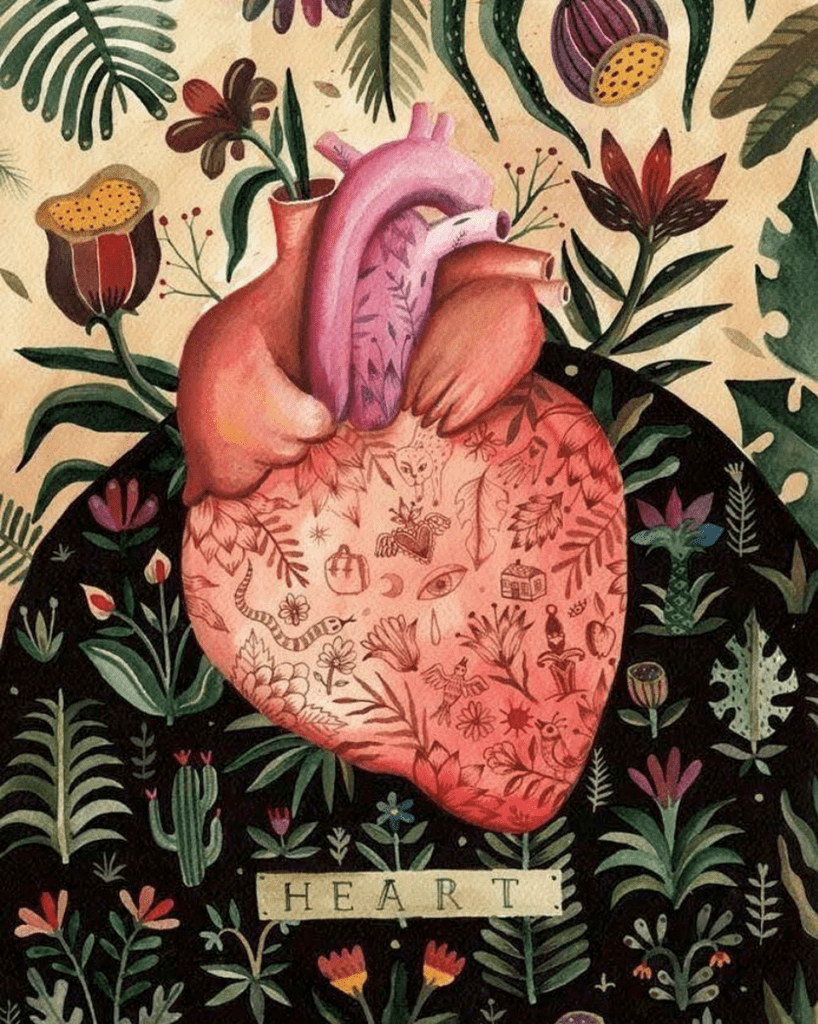
by Maria Papaspyrou | Feb 24, 2020 | Anxiety, Depression, Depth Psychology, integration, Mental Health, Relationship to Self, Self development, Shadow Work, Systemic Family Constellations |

Art by Aitch
In the West, our understanding of the processes of repair and regeneration has been conditioned by the medical model and its inbuilt treatment paradigm. This paradigm has spread beyond the medical profession, becoming the dominant model of how we relate to all discomfort, illness and health. Due to this internalized value system, healing has been a shamed and exiled word in psychology and most of psychotherapy, despite its relevance to these fields. Denied as primitive and incompatible with the realms of science and its inherent status and power that these fields aspire to, healing’s intuitive wisdom has been replaced by ‘clinical knowledge’ and ‘evidence-based’ practices. But when we attend to matters of the heart and the soul we need to work in greater depth. Scales, generalized measures and questionnaires do not penetrate deep enough to reach a person’s soul on its unique journey.
Treatment rests on the principles of exclusion while healing relies on the powers of inclusion. In treatment, what is seen as painful and undesirable, bothersome or even un-dignifying is fragmented from the whole and treated in isolation. Symptoms and ailments are medicated out of existence while the rest of the person is to carry on unchanged, as before. In healing work, we follow the movements of inclusion. We take symptoms seriously and embark on a relationship with them. We animate them and give them voice to converse with. We give them their space in exchange for their messages and wisdom. Rather than bothersome or superfluous, they are honored as messengers of the soul, in service of our own unconscious depths.
The way of approaching symptoms in the treatment model is aligned with an individualistic worldview that sees parts of any system as separate and autonomous from the whole they belong in. Healing follows a systemic worldview, where every part of the system bears an impact on the whole; any individual movement will affect the wider network it is an intrinsic part of. It recognizes the cause and effect of interconnectedness within the wider ecosystem of the Self and its surroundings. What is suppressed and excluded does not simply disappear, it returns in different forms. Until we receive and process the messages of our symptoms, the messengers will keep on coming. The process will need to repeat itself until we support the necessary changes that will allow a deeper order to be formed; a deeper sense of Self to emerge.
In the treatment paradigm, the agency is located primarily outside of us. It rests with a doctor, or a pill, or a course of treatment that we hope will free us from our unwanted symptoms. However, in the healing paradigm the primary agency rests inside of us. We might use pointers and guides from the outside, but the keys remain inside ourselves and the healing journey takes place firmly within. While entering our process of healing, we have to tread the paradox of retaining our agency whilst surrendering to the process within. This surrendering summons the inner healer that exists within the depths of us all, the one that knows what is truly needed and what is ready to be discarded, the one that carries nature’s wisdom through our bones. In the healing process, rather than stay who we were, we must shift and grow in new directions, becoming other aspects and versions of ourselves, rooted in greater service to our wholeness.
Treatment modalities render the emerging inner movement incomplete. Whatever has risen to meet us has been suppressed never to be truly seen or known. Whatever unconscious fact has been carried by our symptoms into consciousness has been silenced and its integration into consciousness remains incomplete. In healing, inner movements are followed through to completion as we strive to receive the guidance of our unconscious through our symptoms. Whilst in treatment the unconscious remains a separate and excluded part of the process, healing rests on a firm collaboration between our conscious and unconscious selves, with input from both and integration of the two.
Treatment engages the superficial layers of our being whereas healing engages us in much deeper ways, integrating the embodied, cognitive, emotional and spiritual dimensions of the Self. It often requires us to undertake a journey of deep inner transformation, as we move through to our core and undertake the treacherous journey back towards the surface. While the treatment paradigm follows a mechanical and linear path of progression that aims to keep the person as they were before, minus what they are treating, healing modalities embrace the cyclical nature of the inner journey and require of us nothing less than entering the cycles of death and rebirth. Death is not to be kept at bay, it is to be allowed as a natural and necessary part of the process; as a guide for awakening to a greater wisdom of how to live our lives in greater truth and fullness.
A treatment informed process rests on an overarching diagnostic story that moves towards specific goals and outcomes. It emphasizes remaining in control and moving through a set of certainties. A healing informed process rests on the interweaving of multiple and multilayered stories and works on a much wider scope. It is not aiming to remove our wounds, it is seeking to bring them back into a fertile state that supports further growth and life to spring out of them. This is an ongoing process, and whereas treatment exists at a fixed point in time, our engagement with the movements of healing is a lifelong journey that requires us to engage with the fullness of Self throughout our lives and its various cycles. The goal is the inner unfurling that occurs during the journey rather than the destination. It is a path that holds no certainties and rests on surrendering and on deep inner listening to what is ripe to emerge. A process that moves organically through both seeker and guide. In contrast to the treatment modality that holds a clear boundary between patient and expert, the healing process is a joined journey between seeker and healer and has to move through both of them. Carl Jung has said:
“The meeting of two personalities is like the contact of two chemical substances: if there is any reaction, both are transformed”.
When life shakes our sense of wellbeing on any level, treatment might well be what is called for. Alongside treatment, healing might also be a necessary part of our way in and through. To keep engaging with the symbolic layers of life and the meaning making function us humans can thrive on, is to engage with the intuitive and the non-linear wisdom that lays within us. So far, the two modalities have been territorial and defensively dismissive of each other. Despite their differences, they both spring from a desire to be of service and to find ways to restore the human capacity or spirit, which are never really that far apart from each other. They need to work in close proximity as they are both of the world of repair and regeneration, but like the yin and yang, their different offerings bridge the opposites of this world. While treatment smooths over the cracks, healing is of the cracks. While treatment carries the burdens of its work in the container of certainty, healing trusts what emerges in the spaces of vulnerable uncertainty. This is not a call for integration between the two modalities, it is a call for respectful collaboration based on their particular remits; an acknowledgement of their individual limitations and strengths and a recognition that one cannot replace the other.

by Maria Papaspyrou | Nov 1, 2019 | Collective Consciousness, Defence Mechanisms, Depth Psychology, integration, Nature and Self, Political Psychology, Psychedelic Integration, Relationship to Self, Self development, Shadow Work |


Caroline Manière Psychedelic Myster
This book is a stitching process, trying to bring back into contact what has become separated and separate. Trying to reconnect us to a lost feminine wisdom and lineage and to its capacity to bring us back into a state of greater wholeness.
We are living through times in which huge collective splits are becoming amplified on the wider world stage. We come to see clearly how the wound of separateness has become infected and oozes out of every societal pore. It seems that unless things become infected there is little hope of action. Like most patients that enter therapy, we tend to look inwards once our defenses have collapsed and our symptoms have become intolerable. Our collective defenses are certainly overstretched and we are standing on a dangerous edge, called to either integrate or demise.
This book, the restoration of the feminine, the psychedelic experience, are all deeply political matters. Max Dashu writes:
“The practice and ways of medicine have political ramifications because they represent direct spiritual power, energy that cannot be controlled by man-made hierarchies or systems of domination” ( p.60).
Separateness is systemic. It starts with the Other and it creeps into our most intimate connections including our relationship with Self. Likewise, oppression that arises out of the altar of separateness is also systemic. It is the feminine, it is the colonized nature, it is the underprivileged, the third world countries, the refugees, the homeless and displaced that are the weakest link in our society. In systemic thought they say a system is as strong as its weakest link. The weakest links are not negligible. They are where care and attention need to be directed at the most. Make no mistake, all these things are linked and our response to them is also linked. All these things are political and our response to them can be nothing less than a rebellious one. We have to face our current challenges with solid enough ethics, integrity and determination to survive the tension, or risk being ripped apart.
This collection of essays has come out of a deep sense in us as well as in what we are witnessing in the collective whole, of the need to re-member the feminine essence back into consciousness. The feminine we call on in this book is not confined to female bodies, it is part of every soul. Every collective energy belongs to all of us collectively. Kathleen Harrison asks of us:
“It’s important to realize how we each hold within us the masculine and the feminine elements-these well-met opposites are swirling, dancing arm-in-arm, or sometimes in battle. But they are both always within every single one of us.” ( p. 146).
The feminine we call on in this book resides in women as well as men and needs to be nourished and strengthened in all of us, for all of us.
The feminine consciousness restores our awareness of our interconnectedness, with each other as a species, with all other species and nature, as part of a glorious, incredibly intelligent and purposeful, ecosystem. An ecosystem that is fully alive. The feminine knowing of interconnectedness points us back to our shared source in the all emerging void. It reminds us that as we stand on the thresholds of life and death, we are all equal in our collective fate, whichever culture, class or creed we come from. In matters of life and death we return to our shared humanity and our true size. We are all but specs of dust in this magnificent tapestry of life. Our part and role here is to be of service to the life of what needs to live and to the death of what needs to die. To take our place fully in the responsibility and the consequence of it all. Humanity in its greed has become destructive and has aligned with the forces of death and disintegration. When disintegration is serving regeneration, like the death of winter that feeds the spring ahead, it is also in service to life. But the disintegration that humanity is engaged with at the moment is threatening life all around us.
This book aims to address the inequalities within psychedelic culture by bringing more feminine voices and matters to the surface. By bringing the unseen into greater view. This book does not address all the inequalities we are fostering in our community, it points to some and there are more to look at. The proportion of those that are well off in today’s world, with the proportion of women that have managed to lead safe lives, to the proportion of nature that is still vibrant, are sadly interlinked. One cannot be recovered without the other. We need a wide systemic lens to address what is infected in our world today. And most importantly, we need compassion, to make space for the dialogues that will bridge all the Otherness this world has fallen into.
Re-membering the vitality of feminine consciousness, her lost lineage and practices, her deeply embodied intuitive wisdom, will be a much-needed resource for our challenges ahead. Chiara Baldini tells us that:
“Women played a fundamental role in the administration of these rites and altered states of consciousness were a “spiritual technology” used to attain mystical knowledge about the paradoxical nature of reality and human’s places within the natural world”. (p. 78).
In this book we are calling on the Feminine that resides within us all, alongside nature, and her regenerative capacities for integration. In order for humanity to move forward it is essential that we recall and integrate whatever human capacity has remained underdeveloped and delegated to our collective shadow. Instead of consistently relying on an overdeveloped one-sidedness, we need to look for the feminine qualities, that are dormant potential in all of us, and here we will find treasures long lost and forgotten, the secret medicines we all long for whichever side of the divides we fall on.
“In times when the patriarchal excesses of modernity seem to be bringing us closer and closer to planetary collapse, psychedelic and plant medicine seem to be potentially powerful tools and allies in our quest to shake off the grip of those systems from our individual and collective consciousness. This is an essential step towards a more conscious paradigm of integrated and mature masculine-feminine synergy and a better integration between rational and erotic medicine.” (Adam Andros, p. 252).
Psychedelic and altered states allow us a unique access into our personal and collective shadow. They unearth what has been lost or hidden in this space that holds peril alongside potential, and can return us to a wisdom that we deeply thirst for. In the realms of feminine consciousness, we will retrieve the medicines of interconnectedness, fertility, regeneration, compassion, embodied wisdom, feeling, kinship and belonging. If all these forces returned to our world a deep restructuring would take place.
Humanity has fallen captive to a “great forgetting”. We go through cycles of collective events that don’t get assimilated and we find ourselves compelled to compulsively repeat the trauma. We have come up against immense resistance from the ossified status quo towards the inevitable collective changes we are being called to navigate. As we stand before the thresholds of sociopolitical and environmental breakdown we will need all the resources we can master. We will need to transcend our structural and self-imposed limitations of Otherness, separateness and isolation.
Clarissa Pinkola Estes writes:
“In intercultural inquiries, I have been impressed with groups that are pushed out of the mainstream, and who yet retain and strengthen their integrity even so. It is fascinating to see that time after time, the disenfranchised group that maintains its dignity is often eventually admired and sought out by the very mainstream that once ousted it”.(p. 490, note 13)
I am glad someone has put this process into words. It lays bare our responsibilities and the consequences of how we attend to our wider psychedelic culture. It is inevitable that psychedelic culture will leak into the wider culture once again, we are already seeing clear aspects of that. I am not here to declare this as a victory or a foe, I think it is a fragile process that will unearth a lot of shadow on the way, but it is essential that we maintain awareness of our values as a community throughout it all. We have to tend to our internal dynamics, knowing that we are caring for a baby that will grow into adulthood and enter society at large. Do we want that offspring to bring something of value to the world? Do we want it to carry something vibrant, integral and potent within its soul? Do we want it to carry the seeds of change forward? If so we have to disentangle our community, movement, whatever you wish to call it, from its embrace with the oppressive discriminatory dynamics of wider culture. We don’t want that child going back and carrying more of the same. If we want it to make a real difference we have to make sure we cultivate its capacity to integrate division and its ability to stand in the potent, fertile wisdom of greater wholeness, where everything has its place and is strengthened by respectful collaboration.
This book aims to bring back the feminine in its many forms and guises into clearer view, for the psychedelic culture to be fed, inspired, touched, and mobilized by. The wider psychedelic community, resourced by the vision of feminine and altered states must meet our current challenges from the forefront of inclusivity, matching visionary poetics with decisive action.
In closing I will leave you with the words of Anna Luke:
“This is a call to the dark tides of menstruation rather than the clinical exactness of mensuration; a call to the slippery, elliptical, wet, delicious, beating heart of the darkness. This darkness is not of the grave, but of the regenerative darkness of the womb”. (p. 166)
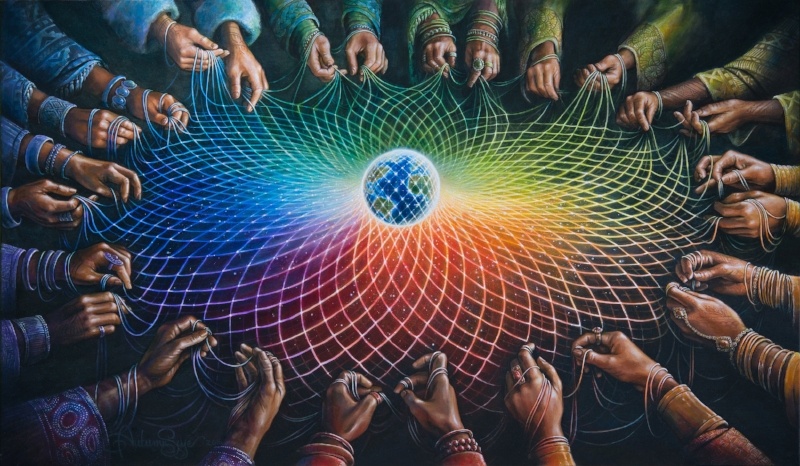
Art by Autumn Skye
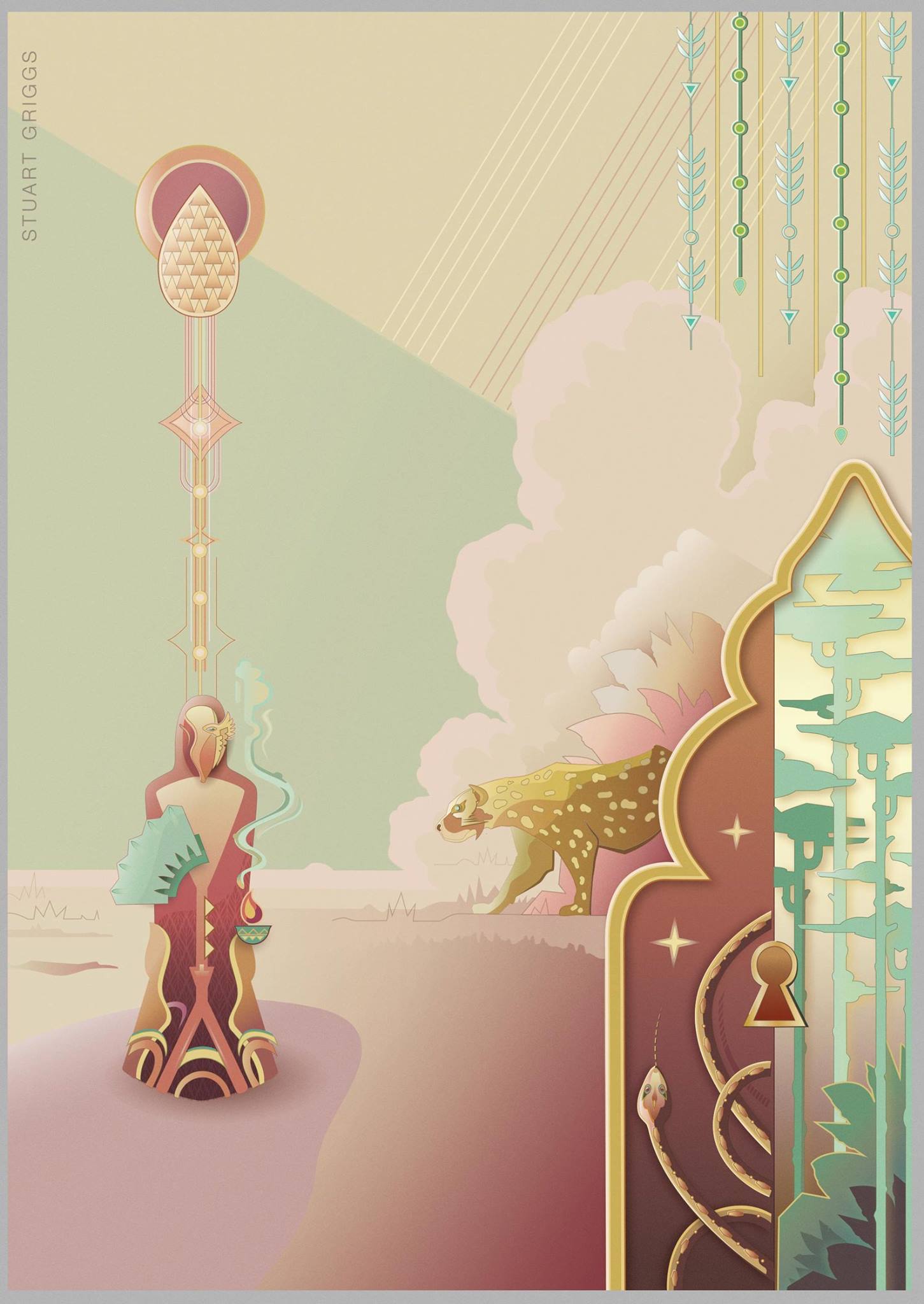
by Maria Papaspyrou | Oct 1, 2019 | Collective Consciousness, Depth Psychology, Ecotherapy, integration, Nature and Self, Psychedelic Integration, Relationship to Self, Self development, Systemic Family Constellations |

Art by Stuart Griggs
Intentional rites and rituals are meaning carriers of great spiritual and psychological importance. They bring us back into belonging with the wider whole we are part of. As we call on the unseen to meet the seen, the higher and the lower worlds to meet us in the middle, we re-animate the world around us. We call everything back into life, into relationship and into co-creation.
For our early ancestors, ritual was the language for communing with the unseen. It held their prayers and offerings that appeased the Gods and Goddesses of disaster and called on the powers of protection. Ritual acts supported a complex emotional connection with the wider energies of life outside Self and community. They also weaved individual and tribal identities tightly together through their intrinsic meaning making process. Indigenous cultures and communities that have retained their links to the tribal soul keep their rites and rituals richly preserved and embedded into their social fabric of life. In the western world, ritual lineages have either been isolated from their spiritual and instinctive dimensions or have been completely forgotten and long-lost. Severed from our mythological and mystical roots, our spiritual capacity has been displaced from its rightful expressions.
Rituals are usually held by the wider container of ceremony or initiations and rites of passage. Our tribal ancestors knew that during transitions from one threshold to another, in order to preserve one from psychic injury, adequate containers are essential. Rites and rituals held the crucial tensions that underlie significant developmental transitions. They safeguarded a sacred and meaning-full space that supported the adult to emerge from the child, peeling back the layers of the Self into greater truth and maturity.
These rites are not to be romanticized in our yearnings for what we have lost. These initiations are bruising and painful transitions that require the shattering of what once was in order to re-assemble us into what will be. But the act of ceremony and ritual would render these spaces safe for surrendering one’s innocence and the community would be there to tend to the open wounds and transmit generational wisdom that would restore a new and yet ancient order of being. Rituals guarded the threshold between one way of being and another, one way of seeing and another, one way of living and another, holding the space sacred while a deep transformation was under way.
Our secular modern western culture has retained very little of our ceremonial past. What still remains has been mostly locked within the remits of organized religion, devoid of its once serving truth and purpose. In the absence of collective initiation rites that mark the developmental transitions of life, young men and women seek these thresholds unconsciously through dangerous and self-destructive thrills, guided by a soul that seeks the next stage in its journey. The soul always remembers what we seem to have forgotten. But with no adequate internal or external guidance, these attempts remain incomplete and can fragment instead of deepening the Self.
Our Great Forgetting has left these forces to reach us only through fate, accidents, love and grief. These come complete with inner rituals and initiations that we tend to fear and medicalize, as we lack safe containers that can support us in offering ourselves to their transformative intentions. These archetypes of initiation unfold into inner rites of passage that can lead us into a greater knowing of ourselves and the world around us. Not always easy or palatable, they are tasked with ensuring we travel where we need to.
A ritual act is a form of soul prayer that ignites from the farthest, faintest recognition of Self deeply within and moves towards the greater collective soul of the entire universe. During inner work, ritual acts invite the wider forces to witness our journey and gift us something of the collective wisdom. They align our psychic energies with our intentions and amplify the potency of our work. They penetrate our ego structures and guide us through the liminal spaces between the worlds of reason, heart and soul, summoning buried layers of Self into action. These symbolic realms nourish our hidden depths and offer a safe container for opening up soulfully.
As we stand collectively at this point in time before the threshold of radical change on so many levels, the timeless wisdom of rites of passage can be a significant resource. What we are collectively tasked with ahead is as old as earth herself. It rests on the elemental wisdom of ritual initiation spaces that restores our connection with the cycles of life, death and rebirth. Unless we recover conscious rituals around the cycles of renewal we will lose our direction in our experience of the visceral flow of life. Restoring our ritual connection to the thresholds of death and rebirth opens us up to receiving the gift of life.
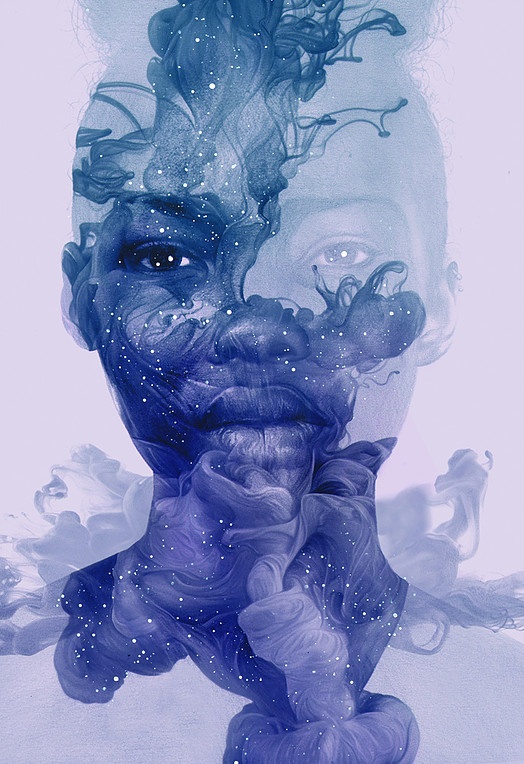
by Maria Papaspyrou | Jul 1, 2019 | Collective Consciousness, Depth Psychology, Nature and Self, Relationship to Self, Self development |

Art by Greg Ruth
The creative act initiates in the deepest layers of the psyche. It rises out of the ancient bones of everything that has ever lived and everything that is yet to come, the land of primordial wholeness, our collective unconscious. Step by step, breath by breath, it moves towards us in search of a receptive vessel to unfold, stirring our heart and soul enough to spur us into action.
The task of the creator is to weave bridges that link the instinctive soul that rests and nestles within, with the world of matter on the outside. The creative birthing journey, from inside out, requires that we step lightly onto this world and allow ourselves to be led by the cycles of life, death and rebirth. To birth our visions forth we have to entrust our journeys to the regenerative rhythms of the world around us. Those that serve the life of what needs to live and the death of what needs to die. Moving slowly, one step at a time, following the continuous flow of forming, dissolving and reforming, we come to cultivate a rich relationship with standing on the threshold of the unknown and un-emerged.
Landing softly, on parts of us that are held by senses and intuitions, we reach to inner lands that incubate the as yet unformed and manifold. Here we find the threads that will unravel creative act and Self alongside each other. In the dance of formation, we can never fully separate creation from creator. Each reflects and holds the other in intimate recognition. Tug and pull, piece by piece, we unfurl ourselves alongside our creative expressions, becoming active and passive, leading and led, founder and found.
There is space for creative expression in anything that we do- from motherhood, to relationships, to painting, sculpting, writing and everything that moves the soul- and it always requires risk and experimentation. It requires us to enter a zone of creative freedom, where we allow something that is ready, to unfold. As we stand before the void of nothingness, ready and willing to discover, we have to brave the primal terror of emptiness and the unknown. The creative journey is a ride through chaos. As we peel through the layers of confusion, doubt, shame and judgement with playful curiosity and courage, we bear witness to an emerging order that brings forth something of value and service, as much to our soul as to the Soul of the greater whole.
It is in the solid container of discipline we can engage with the richness of chaos that gradually reveals itself, only to those who will commit. To stoke up the fire and keep the creative flames alight, to let chaos whisper its wisdom into our heart, we have to consistently show up to what the soul has chosen. This is the same journey that any initiation and transformation would lead us through. By stepping into a dialogue with the all-emerging void, we have already summoned enough inner allies for the way ahead. In good time, our expressions evolve into their own, as the wild and the untamed gradually discover form and voice. We have led what belongs to the intuitive soul into mature completeness. And in doing so, something of Self reaches its own completeness.
The alchemical dimension of the creative process purges and purifies the spirit. Those that work to bring something of the world within to the world without, awaken and engage the dormant layers of the deeper psyche. They activate the latent instinctive allies of the greater Self. Engaging with the creative force is an ongoing and intrinsic aspect of living. This is a fire we have to keep on stoking. If we let the flames go out, we run counter to our innate nature, for to keep this fire alight is to call soul into making.
The process that starts in the deepest and most private corners of ourselves transforms into an outer act of presence. And every creative act is at its heart a collective act, channelled by each and every one of us, in service of all. Like the rest of life, all aspects of inner work need to be fed by the creative forces that bring us to recall and re-member what was only faintly kept within. To create, is to call a bit more of Self into being. To breathe a bit more depth and soul back into the world.
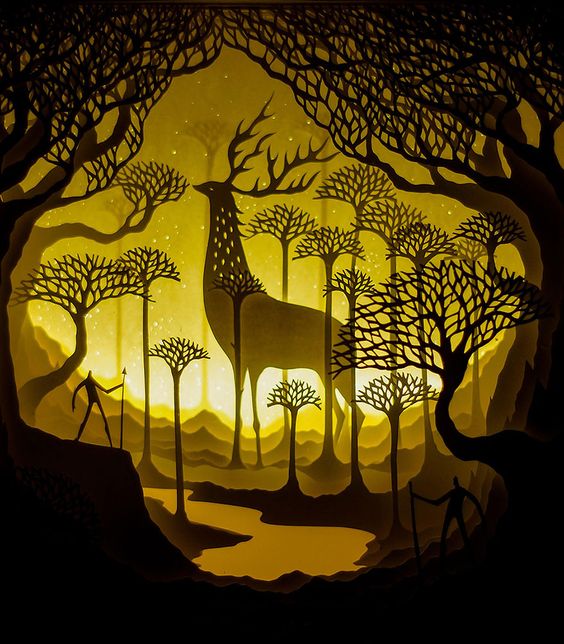
by Maria Papaspyrou | Jun 1, 2019 | Defence Mechanisms, Depth Psychology, integration, Relationship to Self, Self development, Shadow Work |

Art by Deepti Nair and Harikrishnan Panicker
The journey of discovering ourselves is life-long. Every step forward takes us further into a deeper knowing of who we are, yet in the dormant edges of our consciousness will always lie forgotten and neglected aspects of our Soul. Our sense of Self remains limited, while we identify with qualities we wish to embody, at the expense of others we learn to forget. Never fully aware of all that we are, a lot of us exists unclaimed in the depths of Self and Soul.
The personal shadow in Jungian psychology is a space in our unconscious psyche that holds all the unacknowledged, denied, neglected and rejected parts of who we are. Beyond the boundaries of consciousness lives all that aches to take its place amongst the rest of us. Here we delegate the parts of us that threaten to unstitch our domesticated sense of self. Exiled by a moral compass that has been handed down to us at a tender time in life, a time when being loved and belonging were crucial for our surviving, their exclusion helped us fit into the families we come from, the groups we belong to, the societies we are part of.
The wild creatures of our shadow lands tend to the intricate balancing act of holding a counterweight to all that we think and wish that we are. They compensate for our persona, the mask with which we present to the outside world. This trained and tamed part of our self is absolutely essential for navigating society and our various roles in it, but it can also trick us into believing that we actually are who we appear to be. This hollow husk of Self has no roots into our deep Soul and cannot sustain us in times of trouble or transition. We need to summon the wider capacities of a greater wholeness to navigate the waves of life.
What grows in the shadow of the psyche remains abandoned and starved of its potential for vitality and purpose. Here in our deepest dark we may have relegated the darkness that completes our light or even the light that completes our darkness. If we have found safety in the world behind the fortress of a defensive identity that keeps anything fertile at a safe distance, then all the love, compassion and capacity for connectedness have been entrusted to our shadow. If, on the other hand, we have allowed ourselves to be only right, only kind, only light, then our sadness, shame and rage have been banished into silence.
Exclusions create tensions and what is excluded will always find a way to re-affirm its presence and right to belong. If we cannot trace the edges of our shadow within ourselves we will come across it, time and time again, outside ourselves. What is an outcast within us converts to outcasts outside of us. This is how scapegoats form into reality. Our projections create mirrors where we can catch a glimpse of what needs to be recalled within us. If we have kept our potent capacities at bay, we run the risk of idolising others in search of the light we know we hold but cannot find. If it is our sense of inadequacy and shame that we have kept at bay, we will attack others in our attempts to shore up what needs to be re-membered. Finding a way to sit with whatever creature of the Self crosses the threshold into the daylight of consciousness, will slowly soften their hard-worn edges. What finds its way back to us will have to be slowly assimilated and honoured into consciousness. As we gather stray parts of our Self in their rightful place amongst the rest of us, we also awake to our greater capacities.
Shadow work is inherently strengthening and reminds us that in psychological work wholeness is not synonymous with perfection, it is synonymous with integration and while the end result might be a lot less perfect, it stands in greater truth and wholeness. Our task is never to eliminate our shadow, but to process and relate to it with conscious awareness. We have to be willing and courageous enough to allow ourselves to become contaminated with the breadth and depth of life. To separate from our identification with the Gods and return to our mortal fate of limitations and imperfection. Inhabiting our rightful size and place opens us up to the potent heart-medicine of compassion, which restores us to a deeper belonging with all aspects of life, within and without.
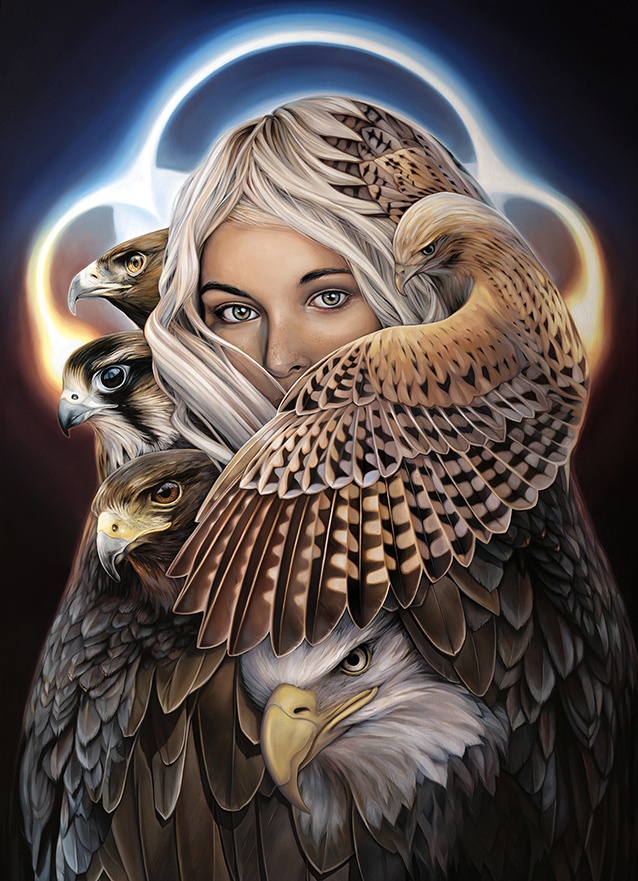
by Maria Papaspyrou | May 1, 2019 | Collective Consciousness, Defence Mechanisms, Depth Psychology, Ecotherapy, integration, Nature and Self, Relationship to Self, Self development |

Image by Collin Elder
A world that is aching requires more of us to be available as a resource for its healing processes. It needs us to show up fully and engage responsibly with the collective task at hand: supporting the intricate balance of environmental and relational ecosystems that can support the forces of life on our planet. We can only do so by moving beyond a narrow sense of self and into the greater spheres of interconnectedness and oneness. By opening up to an inner and outer wholeness.
The task of cultivating presence is even greater in a world that entices us in constant disruptions and invites us to disconnect in a myriad of ways. A world that is intent on moving us at great distance from our inner worlds. We are persistently removed from our deep despair, alienation and grief as well as our boundless creative and regenerative potencies. Shielded but weakened, we lead fragmented lives that limit our sense of self and presence.
Presence emerges from the act and art of deep inner listening. It rests on our capacity to remain open and available to all that exists within ourselves. On our capacity to re-member our embodied wisdom. When moving inwards we are called to meet our light and darkness in equal trust and measure, with a heart that includes all and touches everything with compassion. Free of judgement and full of curious attention we can move in closer to whatever emerges, cultivating greater intimacy with all that we are. The greater the contact we have with life within ourselves, the wider the space we can relate to others from. Gradually we become more available to ourselves, to others, and to the world around us.
Our capacity to be present is equal to our capacity to be vulnerable. When we commit to the forces of presence we have to show up in our fullness, allowing ourselves to be seen, witnessed and reflected back through the mirrors of intimacy. We enter the relational field of life that supports awareness and growth. Our sense of Self emerges through the intricate web of interconnectedness. When showing up in our fullness we stop hiding behind the longings of who we wish to be and enter the container of who we truly are. We arrive to our responsibility for how we exist in our inner and outer world and to the source of aligned action. This level of awareness is enlivening; to cultivate greater presence is to be brought back to life more fully.
Practices that quieten the mind, teach us how to inhabit our embodied selves and hone our attention can support us in cultivating greater presence. They teach us how to engage with the attentive stillness that true presence requires. They move us into the deeper layers of our experience of Self and the world, tracking our inner dance with life. But like the movements of nature whose imprints we carry in all that we are, our emotions and states have their own cycles and rhythms of opening and closing, constricting and releasing. Our sense of presence will ebb and flow and like everything else in life it will exist in constant flux. Under the nourishing gaze of attention, we can attend to every stage of our inner journey. Honouring each opening and closing supports their true essence and their service to the forces of change and transformation.
Presence supports intimacy and in return intimacy supports presence. Together they create the freedom to reach and be reached, to touch and be touched, to move and be moved. Throughout our lifetime we have mastered endless disappearing acts that arise from a deep-seated fear of being hurt, harmed, disappointed, let down and abandoned. As adults we have to re-learn trusting our hearts with others. We have to re-learn trusting contact with ourselves. Deep inner work requires presence and intimacy with whatever guides us internally or externally. By surrendering to the deeper movements of our relating self, we remain open to what needs to emerge. This is a potent medicine for the poisons of our world today. In presence we can include it all, in absence all is lost.
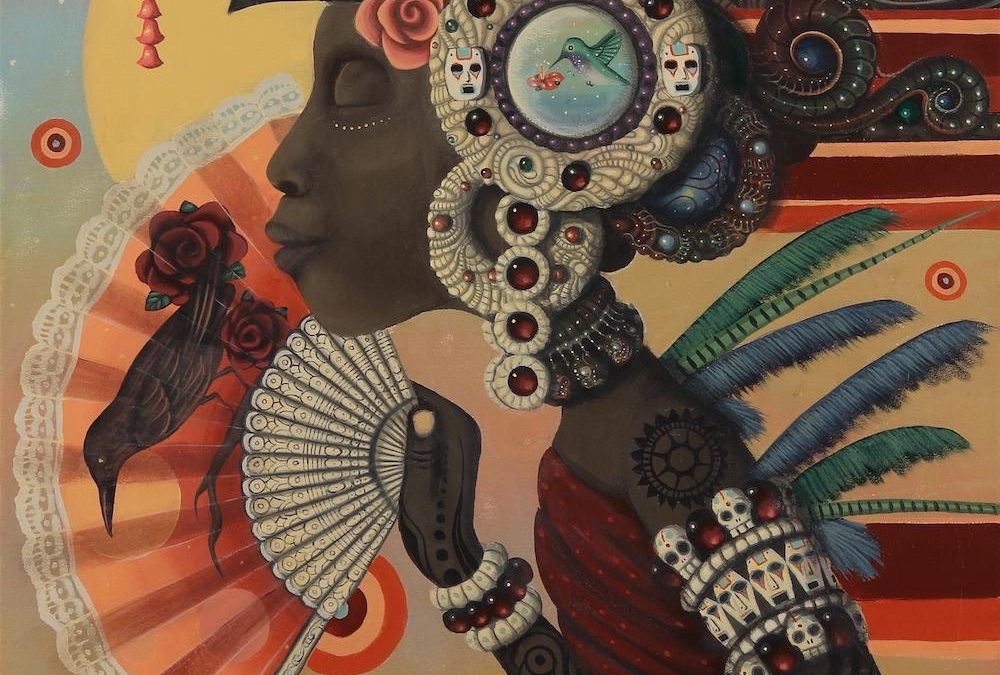
by Maria Papaspyrou | Dec 1, 2018 | Collective Consciousness, Depth Psychology, integration, Relationship to Self, Self development, Systemic Family Constellations |

Image by Paul Lewin
We all come from a long line of ancestors, of fates and stories once told and later lost. However lost and forgotten our ancestral past may be, it still lives through us, mostly unconscious and unexplored. Our lives are influenced by events and experiences that happened to others in a distant past and we are seeding imprints for others in a distant future.
We have learned to experience ourselves in a fragmented way, contained within the remits of our personal life, from birth to death, but there are far wider influences at hand. There is a wider story of who we are that has been writing itself from one generation to the next. A thread of living that binds us to experiences that have existed beyond the years we have personally lived through.
We have grown out of the roots and soil of our family tree and its sap of life and nourishment, its consciousness, runs through us. It determines how we move through life, and affects us in ways we don’t immediately recognize or understand. By inhabiting the wider narrative of where we came from and of those that came before us, we come to find our rightful place at the forefront of our ancestral line. We come to restore within us a deep sense of belonging to something greater, a homecoming on a soul level that aligns us to our own purpose in life. This is the journey of weaving ourselves into a greater wholeness.
To re-member the long line of people we have descended from, to acknowledge how many connections it took for us to arrive, to appreciate the life and death cycles that have supported our emergence, helps us witness the enormity of being alive, here and now. We didn’t just happen, we have been happening all along. And like our ancestors, in the mists of time ahead, we too are going to occupy that place of the unseen and the unspoken.
Until we face and process the lives and fates of those that came before us, our path in life will be influenced in ways that don’t fully belong to us. By turning towards our ancestors, we find the collective imprints of wounding and patterns of healing our life has rested on. Trauma travels down the family line, silently moving from one generation to the next, until someone in the line is sufficiently resourced to be able to face what has been trying to reach some level of resolution.
The trauma of our family line might have been on a personal or a collective level. It might have descended from the fate of an ancestor, or from the fate and trauma of a whole country. The pain of those that survived or those that didn’t. The traveling wounds of war and genocide, of migration and displacement. These points of psychic fracture move forward down the life line to remind and forewarn those ahead of the dangers in which they lived or perished. Each generation equipping the next to deal with what they knew life to be. Because the ancestral field is truly benign and the deepest longing of our ancestors is for subsequent generations to thrive, in that way they too live through us.
In the realm of the soul, time is not a linear dimension. Here past, present and future coexist at any given moment. Pain and healing travel through the forces of time and cellular memory backward and forward from their source of origin. The systemic consciousness is acutely aware of any exclusions or misalignments in the family line, and will engage future generations to restore any sense of incompleteness. We are all part of an ancestral super-organism that abides by the deeper laws of nature. The laws of interconnectedness that require us to see further than we are used to, with eyes that penetrate through time and artificial boundaries.
Current epigenetic research is starting to catch up with the tribal notions of the interconnectedness that binds the ancestral field. Nothing exists in isolation and when we work on ourselves we do it in service of those that came before us and of those that are yet to emerge. Our inner work is in service of the consciousness that runs through the systems we belong to. In service of the deepest yearning of the soul, integration and completeness. In inner work we are truly dealing with the infinite and the unbound.
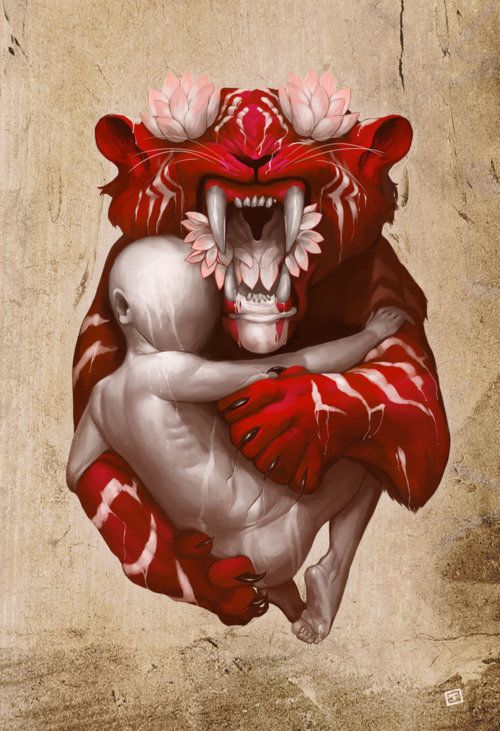
by Maria Papaspyrou | Nov 1, 2018 | Collective Consciousness, Depth Psychology, integration, Political Psychology, Relationship to Self, Self development |

Image by James Jean
One of the primary archetypal tasks of political establishments is to harness the energies of chaos and order, in ways that support the collective developmental maturity and growth. Invariably however, they have a long and dark history of acting out in the face of the energies they are called to process, re-inflicting age-old wounds and traumas.
The current world order has opened us up to our deepest vulnerabilities, as we sail towards the unknown in a state of disorientation, anxiety and distrust. In the time of Trump, Brexit, and most recently the election of Bolsonaro in Brazil, societal divisions and splits are amplified. Left and right, women and men, rich and poor, natives and foreigners, become the battlefields we enter to negotiate the next developmental stage of the human race. The underling archetypal tension we are navigating is between intimacy and isolation, separateness and interconnectedness, between a coming together or a tearing apart.
The tension of the opposites is a dance as ancient and elemental as time itself, fueled by the winds of hope and fear. The two opposing ends always feel separate from one another. Each time one end gains new ground, the other end fears disintegrating annihilation. And yet history reveals the opposite is true, each time there is a shift in one direction the rules of balance require a shift of equal measure in the other direction. All opposites grow and build together since in reality they have existed symbiotically forever, like night and day, like yin and yang. Each of us, positioned in our place across the political, moral, environmental, spiritual spectrum hold on to our beliefs and value systems ready for the fight, firmly believing in the righteousness of who we are and what we stand for.
Positioned in this way ensures that the gap between the opposites widens and the chances to meet each other greatly diminish. It is only through meeting one another that we will master this cosmic game. And yet, it is incredible how painful it is to truly meet. How language is not resilient enough to hold the tensions between us. It is perhaps easier to belittle, dehumanize and obliterate the ‘other’, feeding the splits that are already aching us.
By engaging internally with these tensions that so pain, frustrate and alienate us, we fuel a potent energy in us. If properly channeled, this energy can mobilize our human potential. If we face, bear and survive the tension of opposites internally, within ourselves, they will gradually give way to a third, more balanced and integrated position for us to stand on and act from. Carl Jung called this movement of integration the transcendent function.
The inner journey requires us to recognise ‘our opposite’ as part of our very own shadow, the unintegrated aspects of Self we have disowned. On a collective level we hold a collective shadow. Here we deposit what has been banned and shunned, but it still finds expression through fractions of the world that will uphold it. Our collective shadow contains potential and peril in equal measures. In this psychic space we have delegated our concerns about the environment and human rights alongside our deepest dark, our aggressive and self-destructive tendencies. History has always called on us to process our collective shadow and we have learned along the way that if we don’t own it, it will own us with disastrous effects and repercussions.
Our deepest darkness grows out of our collective dormant wounds and traumas that have led us to endless wars of elimination and extinction. The task ahead requires demanding inner work. We have to turn towards our shadow and meet the wounds it feeds on. Doing so will help us develop our compassion for ourselves and by extension for others that act from their unprocessed instincts and psychopathologies. We have to locate ourselves and those ‘others’ we don’t belong with in the wider whole we all belong to. We are being called to collectively re-member ourselves into our wider wholeness where everything belongs and has its rightful place.
The current amplification of archetypal energies signals deep collective movements. If we can channel and utilise their force, we can support our developmental journey towards healing and growth. These painful but precious opportunities for maturity and growth can be thwarted if we act out on the discomfort we experience within, if we don’t sit next to our rage, pain and fear as midwifes committed to birthing life forth. Our times call for outer activism to be matched by inner activism. We are tasked with finding ways to bridge the opposites back into the spectrum of wholeness. Civilisation as we know it is pushing through the rebirth canal.

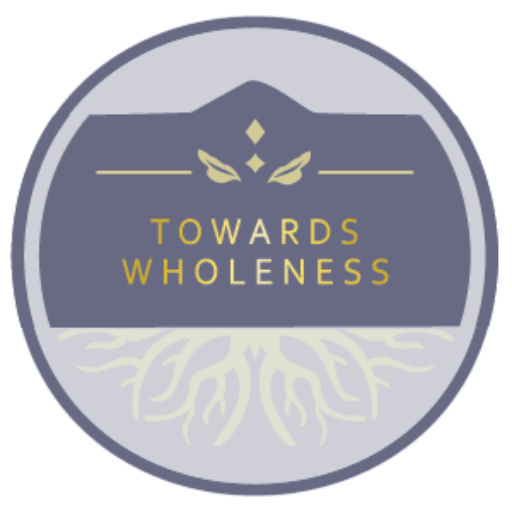

 Art by Heather Mclean
Art by Heather Mclean














